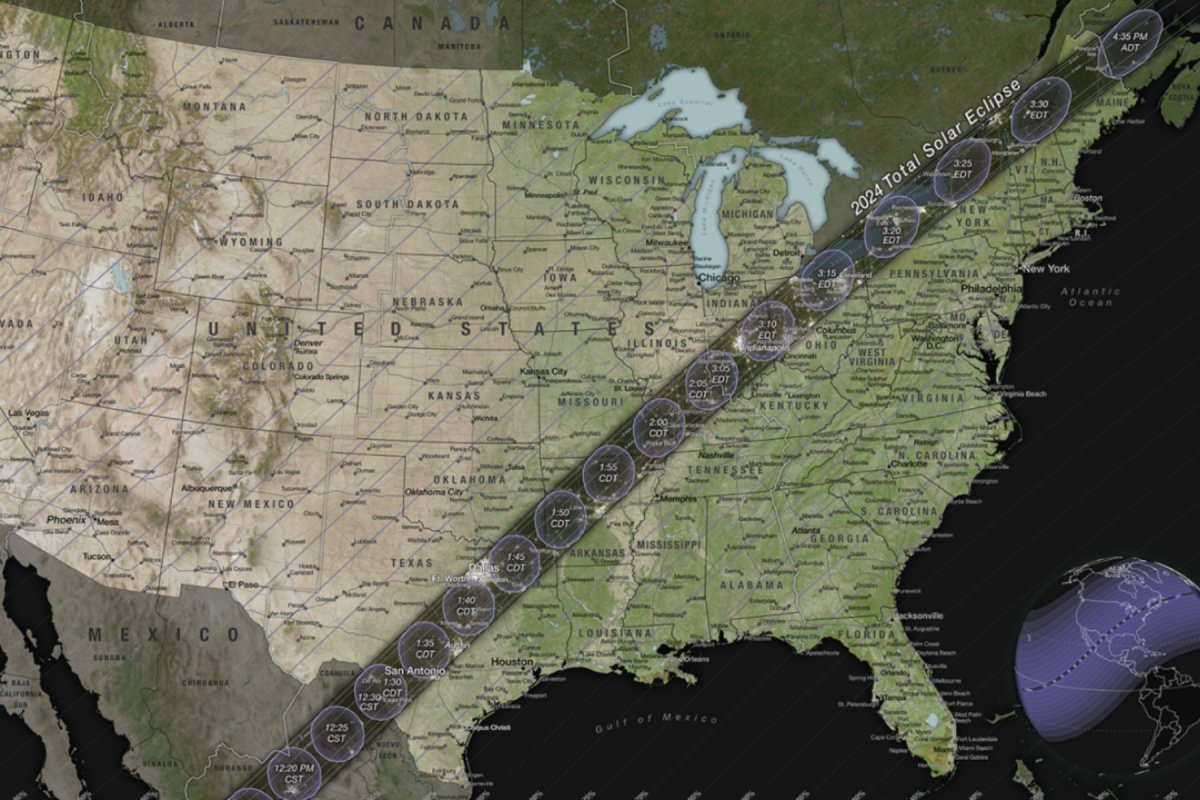A total solar eclipse will pass over the U.S. in April, casting temporary darkness over more than a dozen cities during the middle of the day.
The total solar eclipse will begin just after midday in the south of the country on April 8, and will travel directly over 13 states. For astronomy enthusiasts, NASA has provided trajectory maps that show exactly where and what time Americans can view the rare phenomenon next month.
The eclipse, the first of its kind in the U.S. since 2017, will cross the continent of North America, starting in Mexico before entering the U.S. and leaving via the northeast into Canada.
Those in what is known as the "path of totality" will experience dark skies for several minutes as the moon blocks the light path of the sun for a few minutes. Those not in the direct path will still experience some effects, to a smaller degree.

Brian Lada, an AccuWeather astronomy expert, told Newsweek: "You definitely want to be looking at the sky on April 8th because if you miss the solar eclipse this year, you have to wait two decades until the next chance to see a total solar eclipse from the contiguous United States."
"Total solar eclipses themselves are not rare. They happen every year somewhere around the world. What is rare is to have them visible here in the United States."
Where Can the Solar Eclipse Be Viewed From?
A NASA map shows the full trajectory of the eclipse across the country and provides estimated times. Starting in Texas at around 1:30 p.m. CDT, the eclipse will occur in Oklahoma, Arkansas, Missouri, Illinois, Kentucky, Indiana, Ohio, Pennsylvania, New York, Vermont, New Hampshire, and finally over Maine at around 3:30 p.m. EDT.

Some major cities will also turn dark on April 8. In the following cities, the maximum totality will begin at the following times, according to information provided by NASA:
- Dallas, Texas - 1:42 p.m. CDT
- Idabel, Oklahoma - 1:47 p.m. CDT
- Little Rock, Arkansas - 1:52 p.m. CDT
- Poplar Bluff, Missouri - 1:56 p.m. CDT
- Paducah, Kentucky - 2:01 p.m. CDT
- Carbondale, Illinois - 2:01 p.m. CDT
- Evansville, Indiana - 2:04 p.m. CDT
- Cleveland, Ohio - 3:15 p.m. EDT
- Erie, Pennsylvania - 3:18 p.m. EDT
- Buffalo, New York - 3:20 p.m. EDT
- Burlington, Vermont - 3:27 p.m. EDT
- Lancaster, New Hampshire - 3:29 p.m. EDT
- Caribou, Maine - 3:33 p.m. EDT
NASA has warned anyone turning to the skies to watch the eclipse should take proper precautions to prevent potentially serious damage to their eyesight.
"When watching the partial phases of the solar eclipse directly with your eyes, which happens before and after totality, you must look through safe solar viewing glasses ('eclipse glasses') or a safe handheld solar viewer at all times," NASA said. "You can also use an indirect viewing method, such as a pinhole projector."
Uncommon Knowledge
Newsweek is committed to challenging conventional wisdom and finding connections in the search for common ground.
Newsweek is committed to challenging conventional wisdom and finding connections in the search for common ground.
About the writer
Aliss Higham is a Newsweek reporter based in Glasgow, Scotland. Her focus is reporting on issues across the U.S., including ... Read more
To read how Newsweek uses AI as a newsroom tool, Click here.





